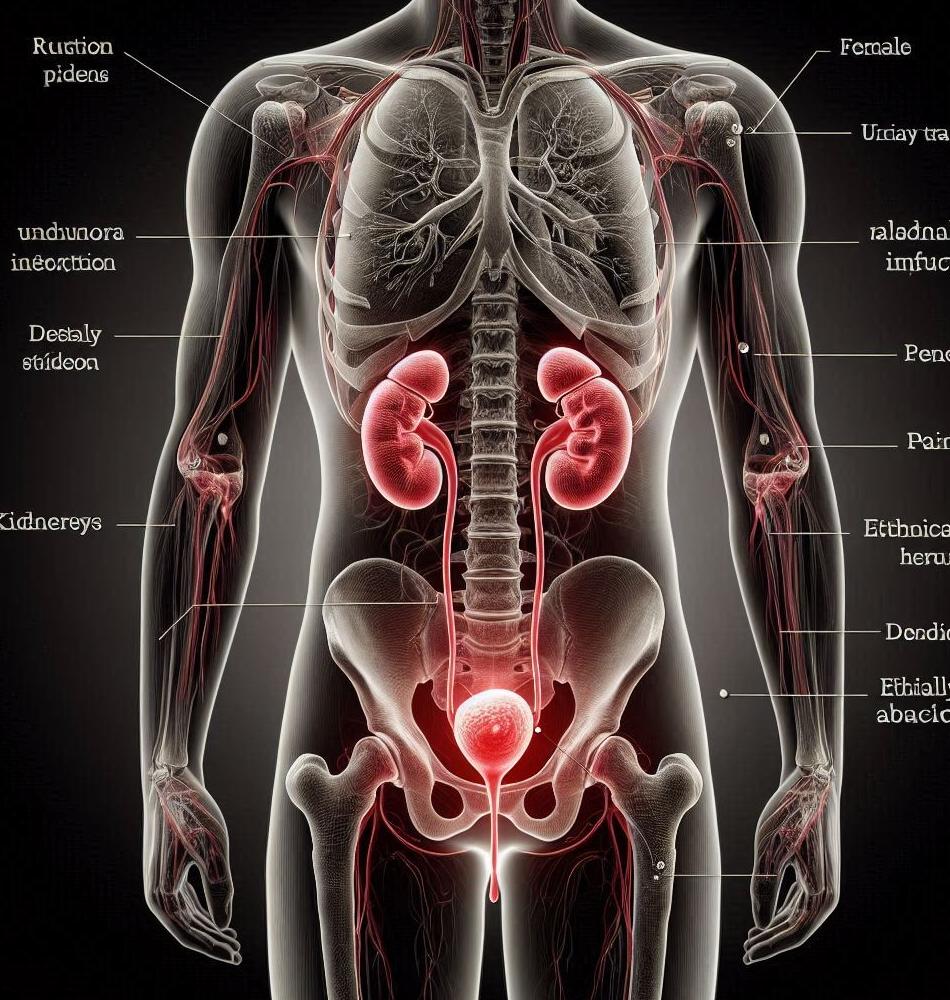Discover how urinary tract infections can lead to nausea and learn about symptoms, causes, treatments, and frequently asked questions surrounding this uncomfortable condition.
Introduction 🚪
Urinary tract infections, commonly abbreviated as UTIs, can be more than just a physical inconvenience. While many people associate UTIs with symptoms like increased urgency to urinate or burning sensations, there’s a lesser-known side effect that often raises eyebrows: nausea. If you have ever experienced the discomfort of a UTI, you may have wondered—can a urinary tract infection make you nauseous? This article aims to shed light on the relationship between UTIs and nausea, exploring the symptoms, causes, and treatment options, all while providing answers to your burning questions.
What Is a Urinary Tract Infection? 📖
A urinary tract infection is a bacterial infection that can occur in various parts of the urinary system, including:- Kidneys- Ureters- Bladder- UrethraIn most cases, UTIs occur when bacteria, typically from the bowel, enter the urinary tract and multiply.
Symptoms of UTIs 🔔
The most common symptoms associated with UTIs include:- A strong, persistent urge to urinate- A burning sensation during urination- Frequent urination, with little output- Cloudy or strong-smelling urine- Pelvic pain- Blood in urine (in severe cases)As common as these symptoms may be, nausea is surprisingly often overlooked.
Can a UTI Cause Nausea? 🤔
Yes! Nausea can be a symptom of a urinary tract infection, although it is not as commonly recognized as the other symptoms. The connection between UTIs and nausea lies in several factors.
Why Do UTIs Cause Nausea? 🌡️
There are a few theories behind why nausea might occur during a UTI:- **Inflammation and Irritation** When bacteria invade the urinary tract, they cause inflammation, which can lead to discomfort and nausea. The body's immune response can also contribute to feelings of malaise.- **Cervical and Uterine Irritation** For women, a UTI may cause irritation that radiates to surrounding pelvic organs, including the uterus and cervix, which can trigger nausea.- **Systemic Infection** In more severe cases, when UTIs ascend to the kidneys (pyelonephritis), it can cause systemic issues, including fever, nausea, and vomiting.
Treatment Options for UTIs and Nausea 💊
Addressing both UTIs and the associated nausea typically requires a multi-faceted approach.
Medications 🏥
- **Antibiotics:** These are crucial for treating UTIs. The specific antibiotic will depend on the bacteria causing the infection and its sensitivity.- **Antiemetics:** For those struggling with nausea, these medications can help manage symptoms and make recovery more manageable.
Home Remedies 🌼
Several home treatments can help alleviate UTI symptoms and reduce nausea:- **Stay Hydrated:** Drinking plenty of water can help flush out the bacteria from the urinary tract, reducing irritation.- **Herbal Teas:** Herbal options like peppermint or ginger tea can be soothing for the stomach.- **Heat Therapy:** Applying a heating pad to the abdomen can provide comfort and reduce cramping.
Frequently Asked Questions about UTIs and Nausea 🌐
- Can men also experience nausea with UTIs?- Is nausea always a sign of a UTI?- What other gastrointestinal symptoms might accompany a UTI?- How can someone prevent recurrent UTIs?
Understanding the Symptoms of Nausea 🌈
Recognizing nausea associated with a UTI can help in timely treatment and mindfulness of one’s overall health.
Physical Symptoms of Nausea 🔄
Nausea can manifest in various ways, including:- A queasy feeling in the stomach- Sweating or clamminess- Loss of appetite- A sensation of dizziness
Mental Effects of Nausea 💭
Beyond the physical symptoms, nausea can also have emotional ramifications, creating anxiety or distress about worsening health.
Medication and Lifestyle Changes for Prevention 🚀
Thinking ahead can save one from the discomfort of UTIs and the potential nausea that accompanies them. Listed below are some strategies that can minimize the risk.
Lifestyle Changes for Prevention 🏃♀️
- **Stay Hydrated:** Proper hydration can help flush out bacteria.- **Practice Good Hygiene:** Always wipe from front to back after using the bathroom to prevent the spread of bacteria.- **Avoid Certain Products:** Personal hygiene products, such as douches and scented soaps, can disrupt the natural balance of bacteria.- **Regular Bathroom Visits:** Don't hold in urine for prolonged periods; urinate when you feel the urge.
Conclusion 🎯
Urinary tract infections can present various symptoms, and nausea is one that should not be ignored. Understanding the relationship between UTIs and nausea is crucial for effective treatment and recovery. If you or someone you know experiences nausea alongside UTI symptoms, it’s important to consult a healthcare professional for a thorough evaluation. Remember, staying hydrated, practicing good hygiene, and seeking timely medical intervention can go a long way in preventing recurrent infections and associated discomfort.
.png)






